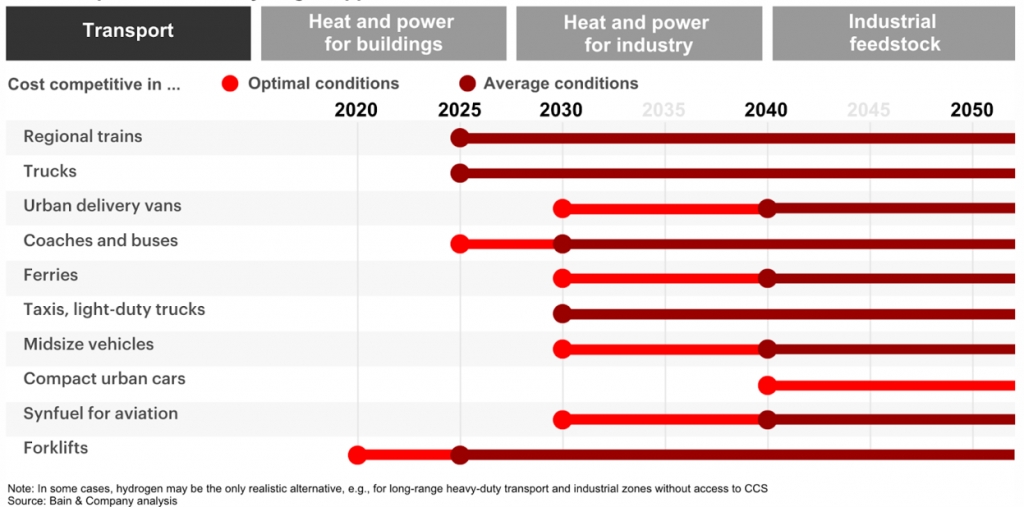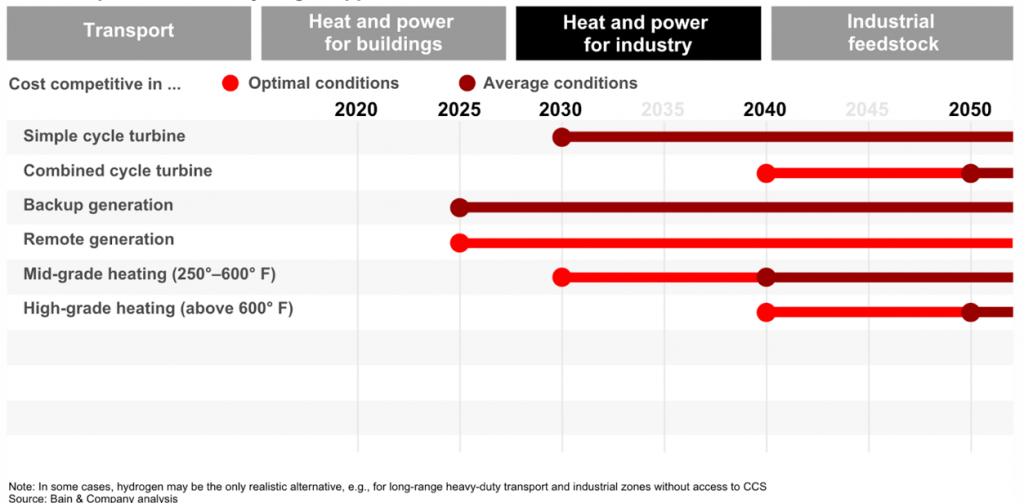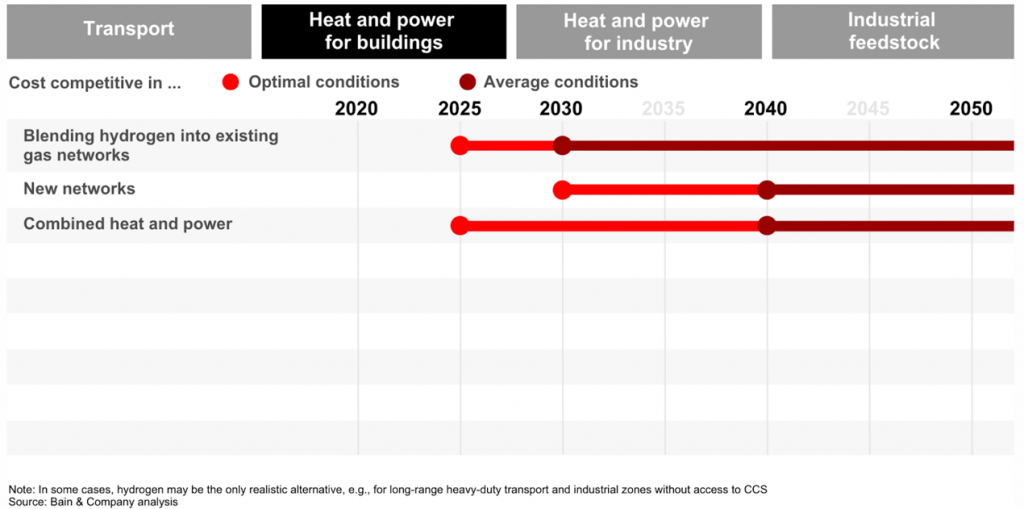In the all-encompassing quest to steer humanity’s future towards carbon neutrality, some challenges are easier to solve than others. We hold our breath in anticipation for the innovations of tomorrow to sweep away today’s problems. As the global discussion and news cycle steers towards the success and the simplified, we hear of the incredible cost curves of solar and battery technologies, press releases promising carbon-neutral corporations, and incredible innovations inching their way out of the lab. In the context of an existential, all-encompassing crisis, our moth-like brains are drawn to hope like a candle. But the challenges that require less sexy and more patient, nuanced, and complicated solutions, are still unsolved.
These challenges include some of the most prevalent human creations including cement, steel, fertilizer, aviation, shipping, long-term storage, and chemical feedstock. Hydrogen has the potential to prove imperative in decarbonizing these industries, and governments have caught on. The UK just released its hydrogen strategy, the US included building four new regional clean hydrogen hubs in their new infrastructure bill, the EU was the first with its hydrogen policy and China has included hydrogen in the latest 5-year plan as one of its six industries of the future. Even NY just committed to testing green hydrogen mixed in with natural gas in a new utility-scale power plant. Why hydrogen, what’s the difference between each color, what are the hydrogen’s most promising applications, and what are their realistic timelines?
Why Hydrogen and what color is it?
What makes hydrogen unique is the science isn’t new and, depending on the application, is proven to work. More than 90m tonnes are produced each year, resulting in revenues of over $150bn.
The majority of that production comes from producing ammonia, a foundational ingredient in artificial fertilizer. But depending on how it’s made, the costs, infrastructure and government incentives hold it back from widespread adoption. In comparison with natural gas, hydrogen contains nearly three times the amount of energy per unit and its by-product is simply water. Despite being the lightest and most abundant element in the universe, we first have to make it. The three main methods of doing so are; creating hydrogen from fossil fuels (grey), creating hydrogen from fossil fuels but using carbon capture to capture emissions (blue), or by using electricity to split the H from the 2O in water using electrolyzers (green).
Blue/Grey Hydrogen
- What; The process of steam methane reforming (SMR), Blue hydrogen is produced from natural gas, with carbon capture and storage (CCS) technology scooping up the resulting CO2.
- Case for; Many say moving to blue hydrogen first is unavoidable and more realistic as a transition to begin reducing emissions now, since with a carbon-neutral source of energy and CCS attached, blue hydrogen produces fewer emissions than natural gas. Another concern is that green hydrogen can’t be cost-competitive or adopted at a wider scale in the current market and we need GHG reductions now.
- Case against; Blue hydrogen locks in dependence on natural gas, which includes all the price volatility and geopolitics that comes with it, while assuming the development of cheap and effective CCS. But in its current state CCS has not widely reached the required efficiency levels. Currently, 60 to 70 percent efficiency is more common than the 95 percent that would be required to be truly net-zero, with its production currently emitting 830m tonnes of CO2 each year.
Green Hydrogen
- What; Green hydrogen, in contrast, is created using renewable energy to power an electrolyzer that splits the hydrogen from water molecules. There are three kinds of electrolysis; PEM (Polymer Electrolyte Membrane), Alkaline (AEL); and Solid oxide. PEM uses precious metals and is generally more expensive. Alkaline electrolysis does not use any expensive and precious metals but is limited to very low current densities which results in costly and bulky systems.
- Case for; Most everyone agrees full-scale adoption of green hydrogen is where we want to get to and is the only true carbon-neutral option, it’s just about when and how.
- Case against; Green hydrogen, however, requires cheaper electricity than is currently available as well as an end market for hydrogen that can sustain high electrolyzer utilization rates so that it can stay competitive. Production and manufacturing of electrolyzer is another barrier. Currently, Gigafactory-scale electrolyzers are being built across Europe but scale and infrastructure are needed in the US to decrease those costs.
Other colors include pink, electrolyzers powered by nuclear, and turquoise where pyrolysis is utilized in heating methane until the hydrogen splits.
While traditional electrolyzers are getting cheaper, they aren’t the only method of creating hydrogen. Over the last few years, there’s been an explosion of startups looking at utilizing different waste streams including everything from industrial waste to biological feedstock. Alex Lewis, CEO of ElectroActive, a startup utilizing food waste to create hydrogen emphasizes how different means of production can benefit from different contexts; “Waste in urban settings has certain benefits over electrolysis with enormous food waste streams in bigger cities, building the process further into everyday life”. Alex goes on to explore the further benefits, “Utilizing current waste streams opens the door for us to have a negative carbon lifecycle, displacing the emissions from food waste going to landfills and the same thing is happening with medical waste or plastic waste”. Alex goes on to emphasize how the best strategy though is one that includes all of the above and the growing narrative framing the decision as a choice between batteries or hydrogen is detrimental to everyone. Like battery technology, certain tech makes sense in certain contexts and applications.
How we read each of these options is really a reflection of how you see the climate crisis will be solved. Each side has its own biases, interests, and assumptions baked into its opinion. Whether it be invested interest in natural gas and a pragmatic belief in market mechanisms for blue hydrogen or skepticism towards the practicality of CCS and more urgency in reducing GHG with green hydrogen. Hydrogen specialist, Ahsan Syed explains the importance of understanding the dynamics of both; “What’s most dangerous is anyone saying they’re right while not truly understanding and knowing the nuances of each solution. Each side is not only competing with each other about the right approach to long-term decarbonization, but with the broader energy industry and other proposed climate solutions for investment, political support, and public attention”. Sensationalizing our innovations has become a mainstay but understanding their applications and timelines are critical to keeping our feet on the ground.
Timelines
Hydrogen has numerous promising applications towards some of our most challenging problems. Below is a timeline across industries from a great report on the cost competitiveness of hydrogen from Bain, identifying when a few of the most promising applications will be competitive in the market.




Note that most of these applications require an enormous amount of energy and fuel which are only as carbon neutral as their source while each application includes different legal and regulatory contexts. A lack of practical examples can easily stale these timelines, for example, if hydrogen, with a higher energy density than natural gas, can be injected into natural gas pipelines or gas-driven applications without blowing pipes or seeping out. As innovation and experiments continue to show promise we’re scurrying to get policy together on issues as basic as how many tubes of condensed hydrogen can be shipped at a time. As is common with any innovation, it can take a moment for regulation to catch up.
With hydrogen there are no silver bullet solutions and, like the greater climate challenge, everything is context-dependent but hydrogen unquestionably offers a unique part of the puzzle. The chicken and egg question of what comes first, the infrastructure or its use cases, will be in the forefront as the innovations come to market and there is more risk-taking from both the public and private spheres. As the urgency for a carbon-neutral world comes hurtling at us, hydrogen will certainly have a part to play.
About The Author

Ryan is a Senior Associate at SecondMuse based in Brooklyn. He’s focused on catalyzing and scaling innovation that’s critical to reducing humanities Green House Gas emissions. Ryan supports the Scale for ClimateTech program in focusing on startups manufacturing, bringing their innovation from prototype to production and getting New York City to net-zero carbon through building a more inclusive climate economy.
Before SecondMuse, Ryan got exposure to many layers of the climate realm including community solar, climate journalism, carbon markets, futures work, and behavior change project while working with Forum For the Future and Electrify Now. Prior to that, he was the co-director of Hult International Business Schools In-house incubator managing 31 startups from over 20 countries and scaling the program to their three other global campuses. Ryan’s current canvas is Climate For Breakfast.com where he refines his thoughts and tinkers with ideas.

